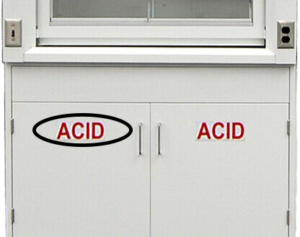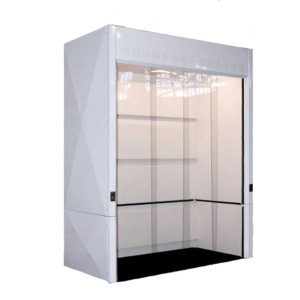Working in a laboratory is important and essential work. However, it can also be dangerous if you don’t follow proper lab etiquette.
Labs are productive spaces for discovery, education, development, and collaboration. It is not only a requirement of an employer to provide a safe and healthy work environment, but also of each employee to adhere to the proper rules and practices set forth to ensure the safety of you and those around you.
Be prepared
Before beginning a project, you should know what materials you intend to work with and what the potential hazards are. This will help to prepare you in the event of an explosion or fire.
You should also know the location of and how to use the shower and eyewash, first aid kit, fire extinguisher, fire blanket, and alarm pulls.
Follow all safety rules
Labs must have a list of standard operating procedures (SOPs) when work involves the use of hazardous materials or physical hazards. A written SOP is a set of written instructions that describe, in detail, how to perform a laboratory process or experiment safely and effectively. Some labs may also have lab-specific SOPs beyond basic safety standards.
Laboratory mishaps include spills, fires, explosions, or the release of toxic materials. To avoid an accident, adhere to the lab’s safety procedures.
- Wear gloves and safety goggles when required
- Follow directions
- Never leave flames unattended
- Do not use flammables near ignition sources
When working in the hood, you should only have the smallest amount of chemicals needed to conduct the procedure at hand.
Clean up after yourself
Consideration for others is a must when it comes to lab etiquette.
Not only is it important to clean up after yourself to be respectful of others, but it is also imperative that you keep the lab clean so that you don’t risk contaminating or ruining a project.
Proper usage and respect for all equipment in the laboratory is critical. Regular cleaning and maintenance of your fume hood will help to keep it at optimal performance levels.
Use designated storage areas for storage
Store hazardous chemicals such as flammable liquids in an approved safety cabinet. 
Fume hoods are only designed to be used as a safety device when working with hazardous materials, not as a storage unit. If items are being stored in the hood, they can end up blocking or causing reverse airflow and result in contaminants escaping from the hood and into the laboratory.
Although a fume hood works to exhaust hazardous fumes out of the laboratory, it should only be used as necessary. Do not leave uncapped bottles in the hood. Leaving open materials in the hood will require the fume hood to work constantly. Keeping unnecessary items out of the hood will reduce the number of fumes exhausted from the laboratory, reducing the risk of harm to personnel and being better for the environment.
It’s best for the environment to turn the hood off when it isn’t in use. If you store materials in the hood, you can’t turn it off or the toxins inside will be released into the laboratory.
Safely dispose of waste
Depending on the laboratory and the materials used, waste may need to be disposed of in a recycling or trash bin, laboratory glassware disposal box, sharps container, or regulated medical waste box.
Chemical waste is regulated by the Environmental Protection Agency (EPA) through the Resource Conservation and Recovery Act (RCRA). It must be disposed of through the Hazardous Waste Disposal Program.
Fume hoods should not be used as waste disposal mechanisms. Many fume hoods are outfitted with condensers, traps, or scrubbers to contain or collect waste solvents, toxic vapors, or dust in the event of a spill. However, these mechanisms are only meant to be used for small amounts of materials at a time.

If you need a fume hood, browse our selection of over 200 fume hoods from National Laboratory Sales today!

